In the growing landscape of electric vehicles, two notable contenders stand out: the Audi Q4 e-tron and the BMW iX2. Both models embody the characteristics of modern SUVs while integrating cutting-edge technology and sustainability into their designs. This comparison delves into their specifications, driving performance, and innovative features, enabling potential buyers to make an informed decision.
Audi Q4 e-tron vs BMW iX2 – Which one offers the better deal?
Both models have their strengths – but which one suits you more?
Compare performance, efficiency, price and space directly: Audi Q4 e-tron or BMW iX2?
Design and Dimensions
The Audi Q4 e-tron is a striking SUV that measures 4588 mm in length, 1865 mm in width, and stands 1632 mm high, offering a spacious interior and a commanding road presence. The Q4’s design blends sleek lines with a bold stance, emphasizing its sporty nature.
In contrast, the BMW iX2 features a slightly more compact profile, with dimensions of 4554 mm in length, 1845 mm in width, and a height of 1560 mm. Despite its smaller stature, the iX2 conveys a sense of agility and sporty elegance, indicative of BMW's design philosophy.
Performance and Powertrains
The powertrains of these electric SUVs highlight distinct performance metrics. The Audi Q4 e-tron offers a range of configurations, with power outputs ranging from 170 HP in the base model to a robust 340 HP in the high-performance version. Acceleration from 0-100 km/h can be achieved in as little as 5.4 seconds, showcasing its impressive capabilities.
Conversely, the BMW iX2 provides a compelling driving experience with 204 HP in the standard variant and up to 313 HP in the more powerful model. Its acceleration from 0-100 km/h clocks in at a swift 5.6 seconds, making it a worthy competitor to the Q4 e-tron.
Battery and Efficiency
Both SUVs come equipped with substantial battery capacities. The Audi Q4 e-tron offers options between 52 kWh and 77 kWh, with an electric range varying from 351 km to an impressive 554 km, depending on the configuration. The efficiency is noticeable, with consumption rates as low as 15.9 kWh/100 km, showcasing its energy-saving potential.
The BMW iX2, on the other hand, features a 64.8 kWh battery, which provides an electric range of up to 459 km. Its consumption rate is even more efficient, with options around 15.9 kWh/100 km, positioning it as one of the more frugal electric SUVs on the market.
Interior and Technology
Inside, both the Q4 e-tron and iX2 prioritize comfort and usability. The Q4 e-tron seats five passengers comfortably, and its trunk offers a capacity of 520 liters, expanding to 535 liters with rear seats folded down. Audi’s MMI infotainment system integrates seamlessly with advanced connectivity options, enhancing the driving experience.
The BMW iX2 also accommodates five passengers, with a slightly larger trunk capacity of 525 liters. Its interior is defined by high-quality materials and the latest iteration of the iDrive system, offering intuitive controls and connectivity features tailored for a more interactive user experience.
Conclusion: Which SUV Reigns Supreme?
While both the Audi Q4 e-tron and BMW iX2 present compelling options in the electric SUV market, the ultimate choice depends on individual preferences. The Q4 e-tron excels in electric range and rugged performance options, catering to those who prioritize long journeys. In contrast, the iX2 emphasizes efficiency and a dynamic driving experience, appealing to users looking for a nimble and stylish urban companion.
As EV technology continues to evolve, both the Audi Q4 e-tron and BMW iX2 provide a glimpse into the future of sustainable driving, making them strong contenders in modern automotive innovation.
Here’s where it gets real: The technical differences in detail
Costs and Efficiency:
Looking at overall running costs, both models reveal some interesting differences in everyday economy.
Audi Q4 e-tron has a slight advantage in terms of price – it starts at 39600 £, while the BMW iX2 costs 43100 £. That’s a price difference of around 3557 £.
In terms of energy consumption, the advantage goes to the BMW iX2: with 15.30 kWh per 100 km, it’s barely noticeable more efficient than the Audi Q4 e-tron with 15.90 kWh. That’s a difference of about 0.60 kWh.
As for range, the Audi Q4 e-tron performs a bit better – achieving up to 554 km, about 76 km more than the BMW iX2.
Engine and Performance:
Under the bonnet, it becomes clear which model is tuned for sportiness and which one takes the lead when you hit the accelerator.
When it comes to engine power, the Audi Q4 e-tron has a barely noticeable edge – offering 340 HP compared to 313 HP. That’s roughly 27 HP more horsepower.
In acceleration from 0 to 100 km/h, the Audi Q4 e-tron is slight quicker – completing the sprint in 5.40 s, while the BMW iX2 takes 5.60 s. That’s about 0.20 s faster.
There’s no difference in top speed – both reach 180 km/h.
There’s also a difference in torque: Audi Q4 e-tron pulls noticeable stronger with 679 Nm compared to 494 Nm. That’s about 185 Nm difference.
Space and Everyday Use:
Beyond pure performance, interior space and usability matter most in daily life. This is where you see which car is more practical and versatile.
Both vehicles offer seating for 5 people.
In curb weight, BMW iX2 is hardly perceptible lighter – 1960 kg compared to 2035 kg. The difference is around 75 kg.
In terms of boot space, the Audi Q4 e-tron offers barely noticeable more room – 535 L compared to 525 L. That’s a difference of about 10 L.
In maximum load capacity, the Audi Q4 e-tron performs hardly perceptible better – up to 1490 L, which is about 90 L more than the BMW iX2.
When it comes to payload, Audi Q4 e-tron barely noticeable takes the win – 515 kg compared to 510 kg. That’s a difference of about 5 kg.
Who wins the race?
The Audi Q4 e-tron proves to be dominates this comparison and therefore becomes our DriveDuel Champion!
Audi Q4 e-tron is the better all-rounder in this comparison.
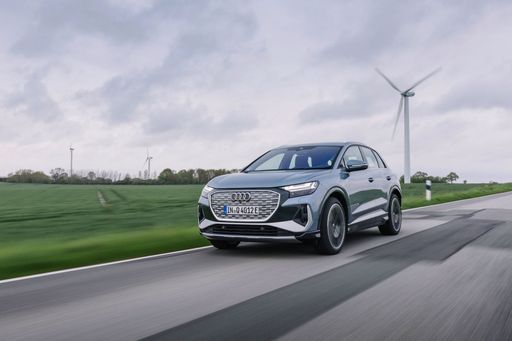 @ Audi AG
@ Audi AG
Audi Q4 e-tron
Audi Q4 e-tron
The Audi Q4 e-tron brings Audi polish into the electric crossover scene, pairing a sleek exterior with a refined, airy interior that makes everyday driving feel distinctly premium. It’s an easy-to-live-with EV that balances comfort and real-world usability with intuitive tech, making it a smart choice for buyers who want electric mobility without giving up Audi character — and yes, it still looks good in the driveway.
details @ Audi AG
@ Audi AG
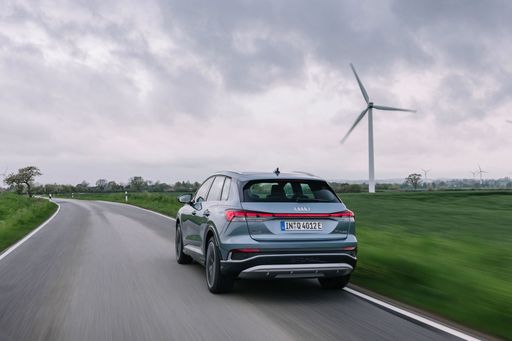 @ Audi AG
@ Audi AG
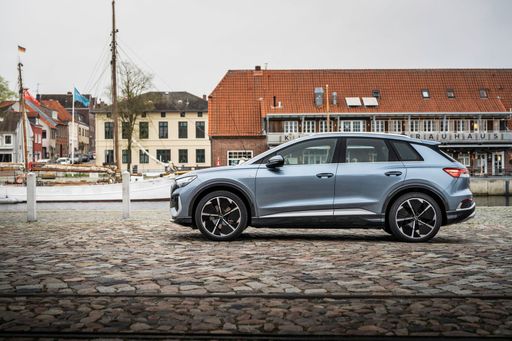 @ Audi AG
@ Audi AG
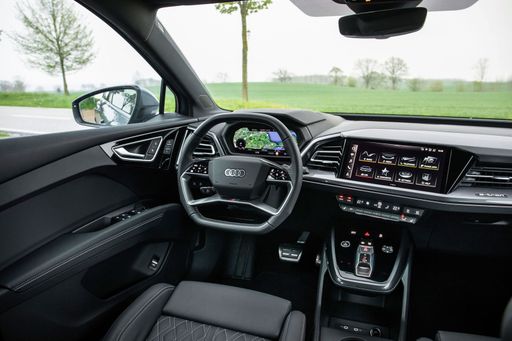 @ Audi AG
@ Audi AG
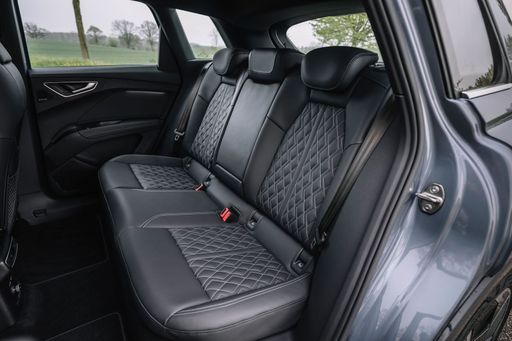 @ Audi AG
@ Audi AG
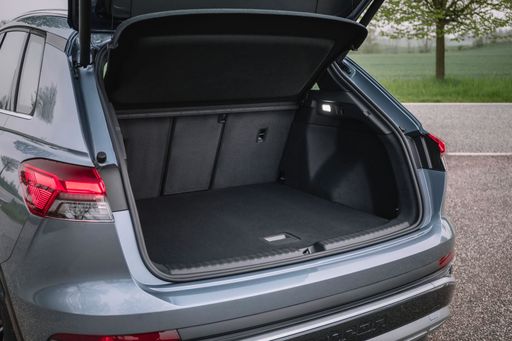 @ Audi AG
@ Audi AG
BMW iX2
The BMW iX2 stands out with its distinctive design and forward-thinking technology, making it a captivating choice for those interested in luxury electric vehicles. Its spacious interior and cutting-edge features offer both comfort and innovation, providing an exceptional driving experience. With a commitment to sustainability, this model is not just a statement of style but also an embodiment of the future of eco-conscious driving.
details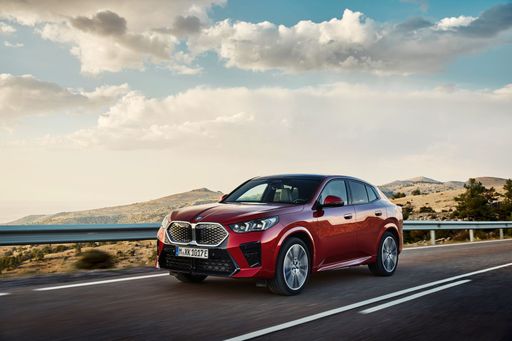 @ BMW Group Press
@ BMW Group Press
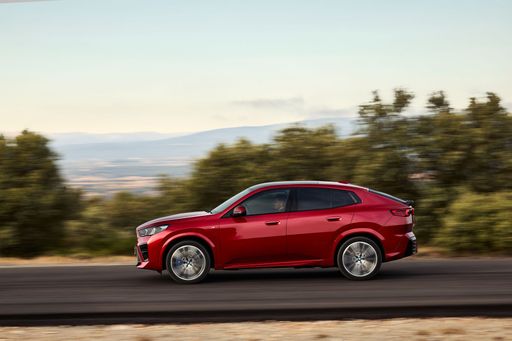 @ BMW Group Press
@ BMW Group Press
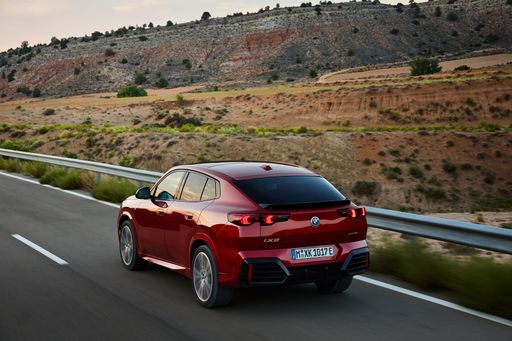 @ BMW Group Press
@ BMW Group Press
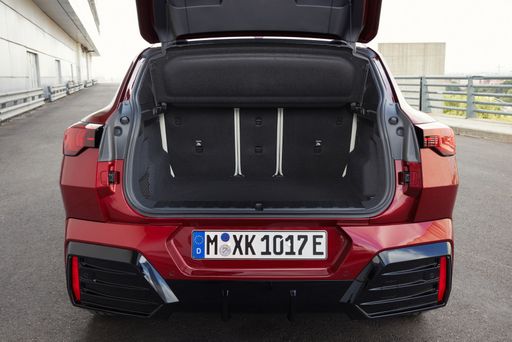 @ BMW Group Press
@ BMW Group Press
 @ Audi AG
@ Audi AG
|
 @ BMW Group Press
@ BMW Group Press
|
|
|
|
Costs and Consumption |
|
|---|---|
|
Price
39600 - 58800 £
|
Price
43100 - 54800 £
|
|
Consumption L/100km
-
|
Consumption L/100km
-
|
|
Consumption kWh/100km
15.9 - 17.4 kWh
|
Consumption kWh/100km
15.3 - 16.3 kWh
|
|
Electric Range
406 - 554 km
|
Electric Range
449 - 478 km
|
|
Battery Capacity
59 - 77 kWh
|
Battery Capacity
64.80 kWh
|
|
co2
0 g/km
|
co2
0 g/km
|
|
Fuel tank capacity
-
|
Fuel tank capacity
-
|
Dimensions and Body |
|
|---|---|
|
Body Type
SUV
|
Body Type
SUV
|
|
Seats
5
|
Seats
5
|
|
Doors
5
|
Doors
5
|
|
Curb weight
2035 - 2235 kg
|
Curb weight
1960 - 2095 kg
|
|
Trunk capacity
520 - 535 L
|
Trunk capacity
525 L
|
|
Length
4588 mm
|
Length
4554 mm
|
|
Width
1865 mm
|
Width
1845 mm
|
|
Height
1614 - 1632 mm
|
Height
1560 mm
|
|
Max trunk capacity
1460 - 1490 L
|
Max trunk capacity
1400 L
|
|
Payload
505 - 515 kg
|
Payload
500 - 510 kg
|
Engine and Performance |
|
|---|---|
|
Engine Type
Electric
|
Engine Type
Electric
|
|
Transmission
Automatic
|
Transmission
Automatic
|
|
Transmission Detail
Reduction Gearbox
|
Transmission Detail
Reduction Gearbox
|
|
Drive Type
Rear-Wheel Drive, All-Wheel Drive
|
Drive Type
Front-Wheel Drive, All-Wheel Drive
|
|
Power HP
204 - 340 HP
|
Power HP
204 - 313 HP
|
|
Acceleration 0-100km/h
5.4 - 8.1 s
|
Acceleration 0-100km/h
5.6 - 8.6 s
|
|
Max Speed
160 - 180 km/h
|
Max Speed
170 - 180 km/h
|
|
Torque
310 - 679 Nm
|
Torque
250 - 494 Nm
|
|
Number of Cylinders
-
|
Number of Cylinders
-
|
|
Power kW
150 - 250 kW
|
Power kW
150 - 230 kW
|
|
Engine capacity
-
|
Engine capacity
-
|
General |
|
|---|---|
|
Model Year
2023 - 2025
|
Model Year
2024
|
|
CO2 Efficiency Class
A
|
CO2 Efficiency Class
A
|
|
Brand
Audi
|
Brand
BMW
|
What drive types are available for the Audi Q4 e-tron?
The Audi Q4 e-tron is offered with Rear-Wheel Drive or All-Wheel Drive.
The prices and data displayed are estimates based on German list prices and may vary by country. This information is not legally binding.
